Pulaski Heights and Pulaski Station on the Rock Island
Copyright 2020 by Bill Pollard
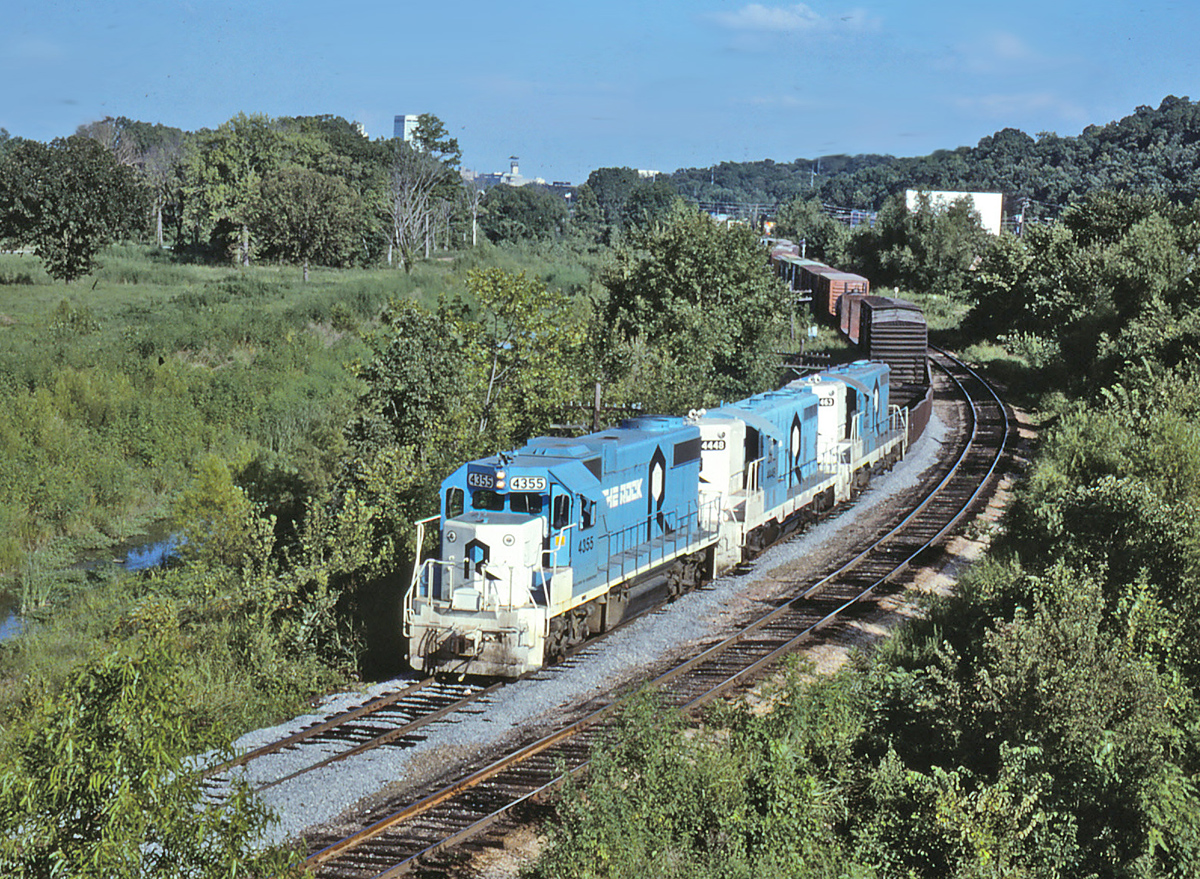

For many years on the Rock Island, and even extending into the Little Rock & Western era after the Rock Island's demise, Pulaski siding has been an important landmark for train operations in the Little Rock area. One might assume that the name was derived from Pulaski County, but that was not really the case. The story of Pulaski actually began in March 1907, when the town of Pulaski Heights passed a resolution asking the Rock Island to build a depot within the town limits. Pulaski Heights, a suburban development on the western outskirts of Little Rock, had incorporated as a town in 1905, and residents found it inconvenient to travel the seven miles from their city to the Rock Island's Choctaw depot on East Third Street in Little Rock.
In that era, every small town and community tried to obtain a depot, partly for convenience and partly for the stature of being a point on the nation's rail system. Railroad companies, in general, looked upon these requests with some degree of disfavor, since fulfilling the request often generated more expense than revenue. Such was the case with the Pulaski Heights request, and in September 1908, Rock Island General Passenger Agent George H. Lee indicated that a station was not needed at Pulaski Heights. One of the arguments against a station was the excellent trolley service that was available from Pulaski Heights to downtown, with only a single transfer required to reach the Rock Island station.
Rock Island's reluctance was deemed unacceptable by Pulaski Heights, and the Arkansas Railroad Commission was petitioned to order the railroad to build a station. At the same time, another group sought a suburban station on West 10th Street. Rock Island countered with an offer to construct a single station at the Third Street viaduct. This station presumably could have also served Missouri Pacific, which crossed the Rock Island at the viaduct, and it would be convenient to the streetcar service that operated over the viaduct. The Arkansas Railroad Commission did not approve the Rock Island proposal, but did order that both the Pulaski and 10th Street stations be constructed. Once the planning process began, Pulaski Heights residents desired a more imposing structure than the frame structure that was being proposed by the Rock Island. In order to have some control over the type and style of station, Pulaski Heights offered to help the Rock Island design and build the station, the cost of which was estimated at $1,500.
Pulaski Heights interests selected Little Rock architect Charles L. Thompson to design the station, and plans for an elaborate brick structure were completed in January 1909. Thompson had designed a number of noteworthy Little Rock structures, including Little Rock City Hall in 1906 and the Terminal Hotel in 1908. Construction began as soon as funds were transferred from the city to the Rock Island to cover the additional costs for the upgraded station design. C.N. Faubell, the subcontractor in charge of the station foundation, started site preparation work in mid-February. General contractor for the project was W.R. Stewart, and the total cost of the project was now estimated at $5,000.
All newspaper accounts mention that the work on the station was being "rushed to completion," which may reflect more railroad public relations talk to satisfy the Arkansas Railroad Commission than actual urgency to get the station in service. In any event, brick laying began on March 8, using dark red pressed bricks supplied by the Clark Pressed Brick Company of Malvern. The brickwork utilized red mortar joints, resulting in a pleasing appearance when finished. This was the same brick company and same masonry style as had been used on the Choctaw freight and the passenger stations a decade earlier. A 300-foot platform was constructed along the trackside of the depot. Once the platform was completed, local passenger trains Nos. 41 and 42 began making flag stops at Pulaski in April 1909.
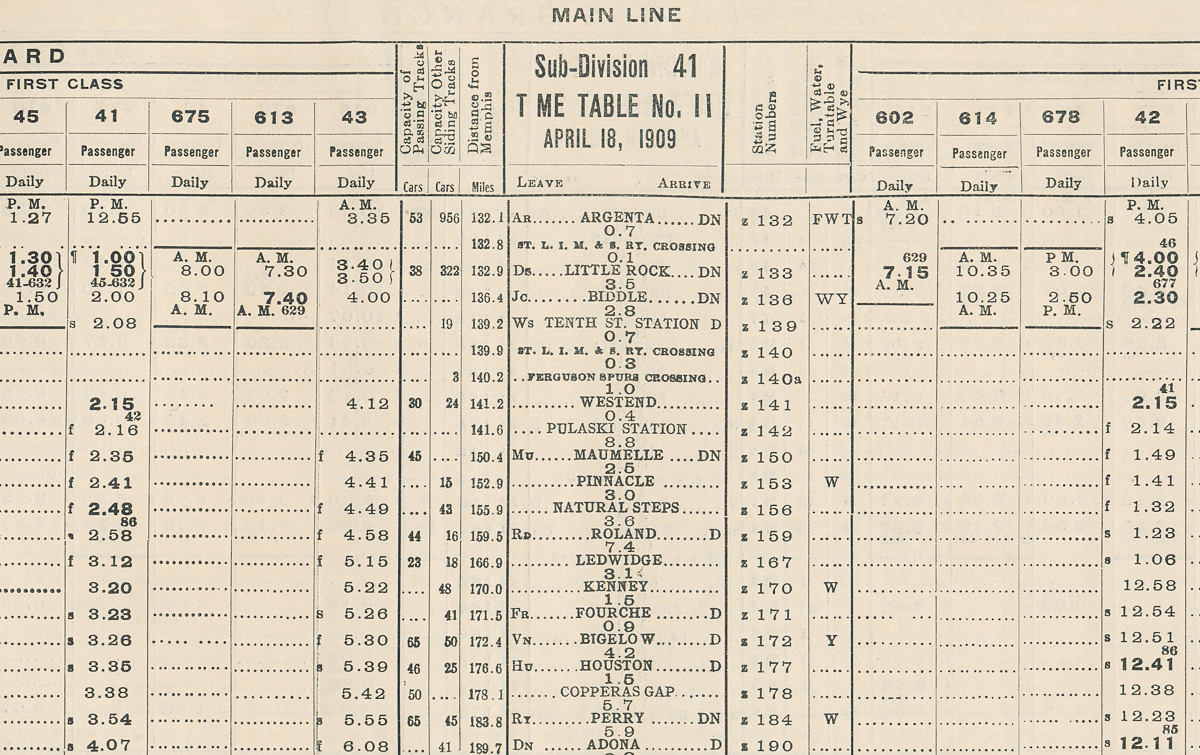
The April 1909 timetable above is the first Arkansas Division employee timetable to show Pulaski station, although the station was not yet open, as evidenced by the lack of a telegraph call and no symbols denoting the hours of the office. The station opened in July 1909, and a general order authorized the shift of train order functions from Maumelle to Pulaski and the permanent closure of Maumelle. The first timetable to show this change was the next issue of the Arkansas Division operating timetable, dated September 1, 1909. The DN (day-night) train order office was moved from Maumelle to Pulaski, allowing the Rock Island to open this station with minimal change in staffing salaries.
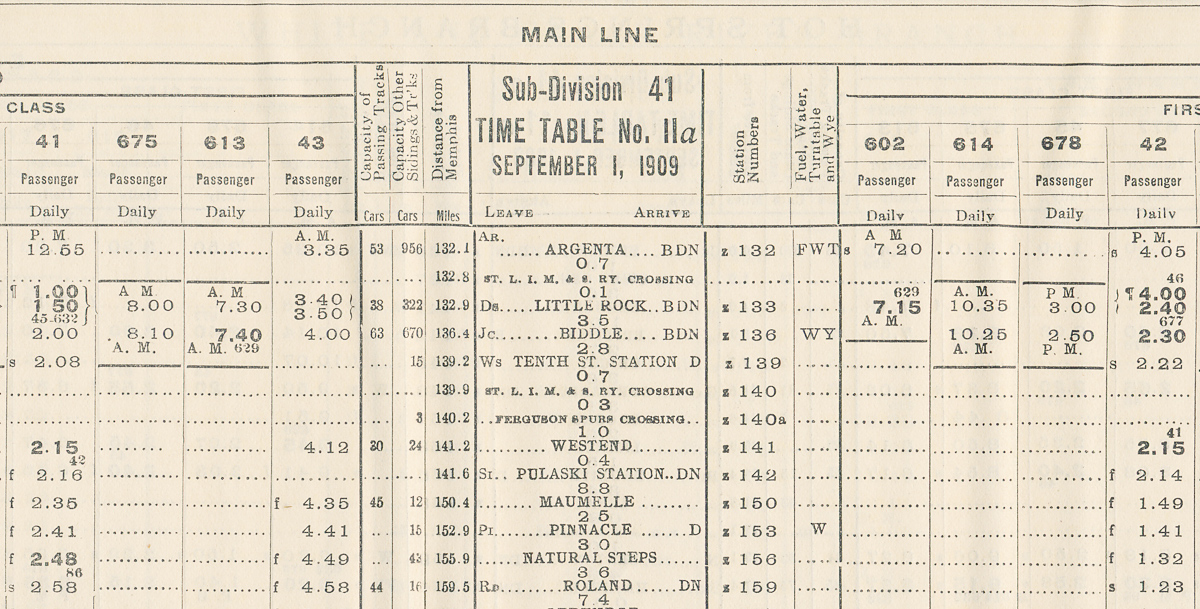

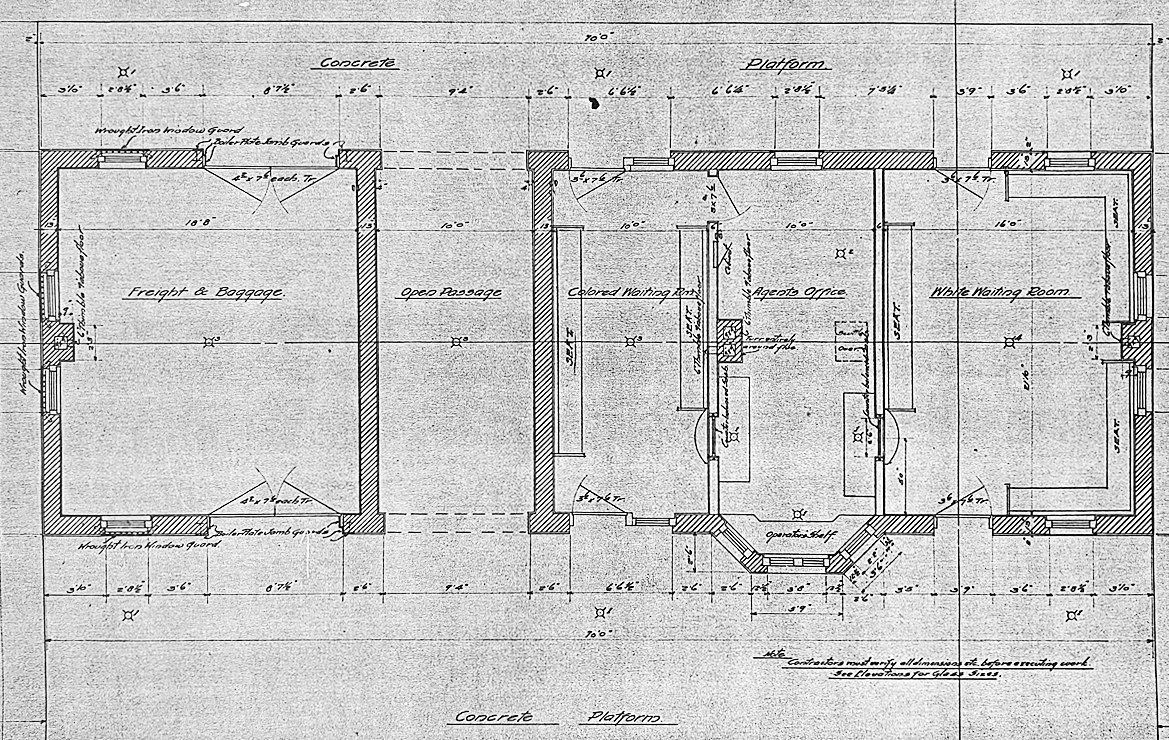
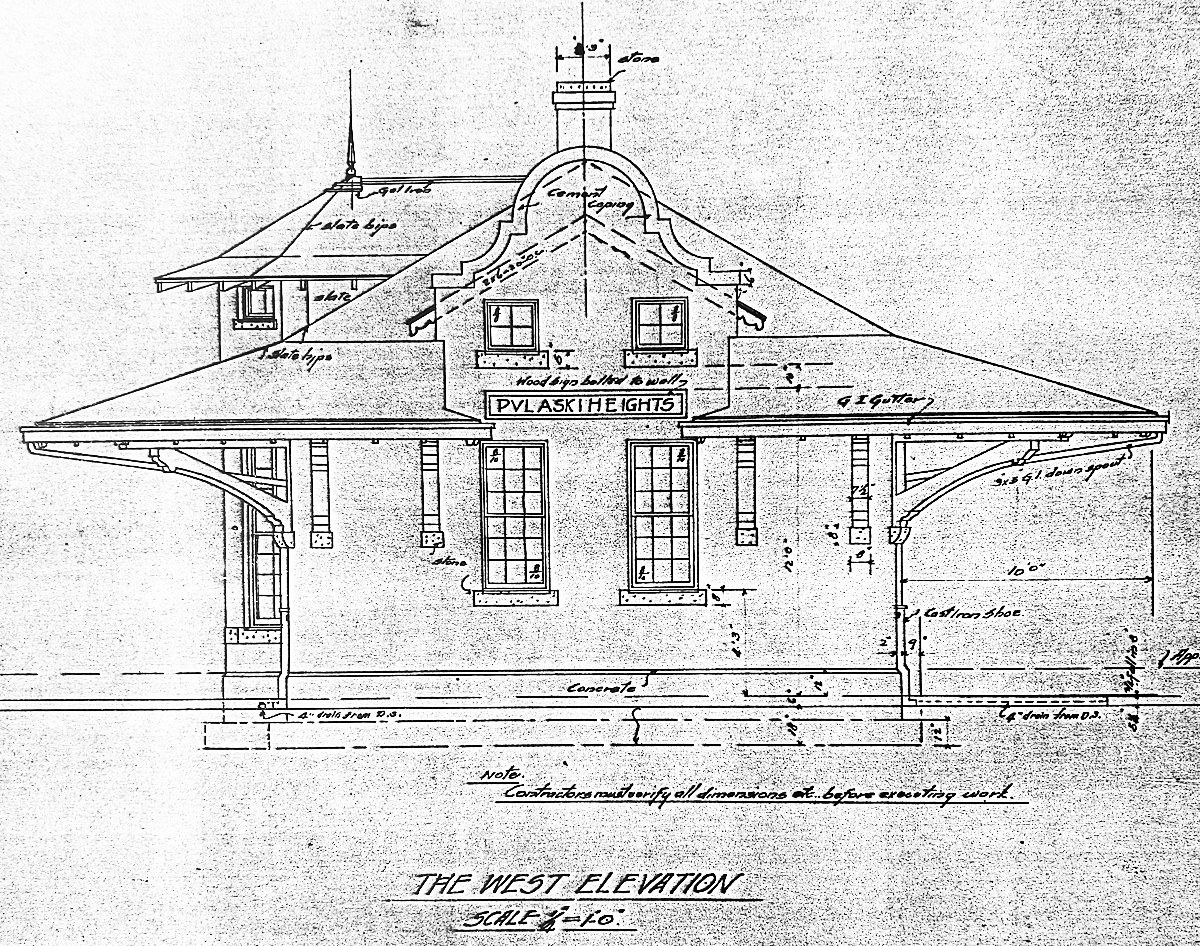
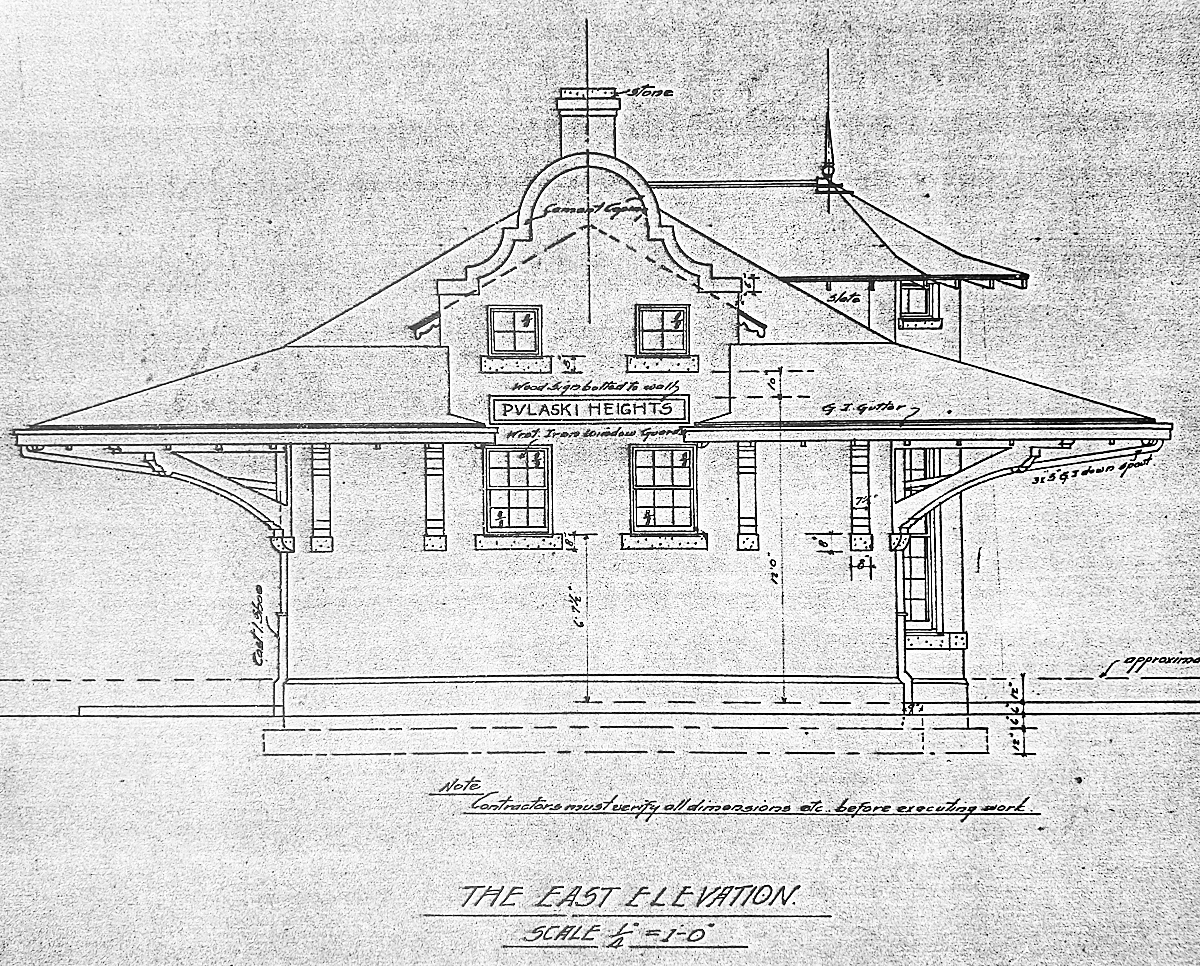

Pulaski was an important shipping point for some years, primarily handling carloads of rock and sand. The August 1911 Rock Island employee magazine noted that Pulaski Stone Company was shipping 200 cars a month and Southern Sand and Material 80 cars a month, all waybilled through Pulaski. Agent and telegrapher positions were frequently filled by different people as new jobs were bulletined or other jobs abolished, causing clerks or telegraphers to exercise their seniority to "bump into" a new position. Incomplete records survive, but among the earliest employees at Pulaski in 1910 were R.W. Boggs and L.R. Kirby. By September 1911, Kirby had become the agent at Belleville, and J.A. Berninger, formerly the second trick operator at Perry, was the new Pulaski agent. In July 1920, E.A. Biggers was listed as agent, and in both 1925 and 1929, the position was filled by E.C. Welch.
Pulaski was open as a "continuous" train order office until late 1912, when staffing was cut back to two 9-hour shifts, and then a single 12-hour shift in 1914. By 1919, staffing was a single-shift 7:15am-4:15pm Monday-Saturday, an arrangement which continued until the office was closed in mid-1932. The two daytime local passenger trains continued to flag stop at Pulaski until mid-1941, when Pulaski was discontinued as a passenger stop. In the same year, a 2,299 foot spur serving Southern Sand and Material was removed after that company ceased operation. This spur had extended northeast from the east end of Pulaski siding.
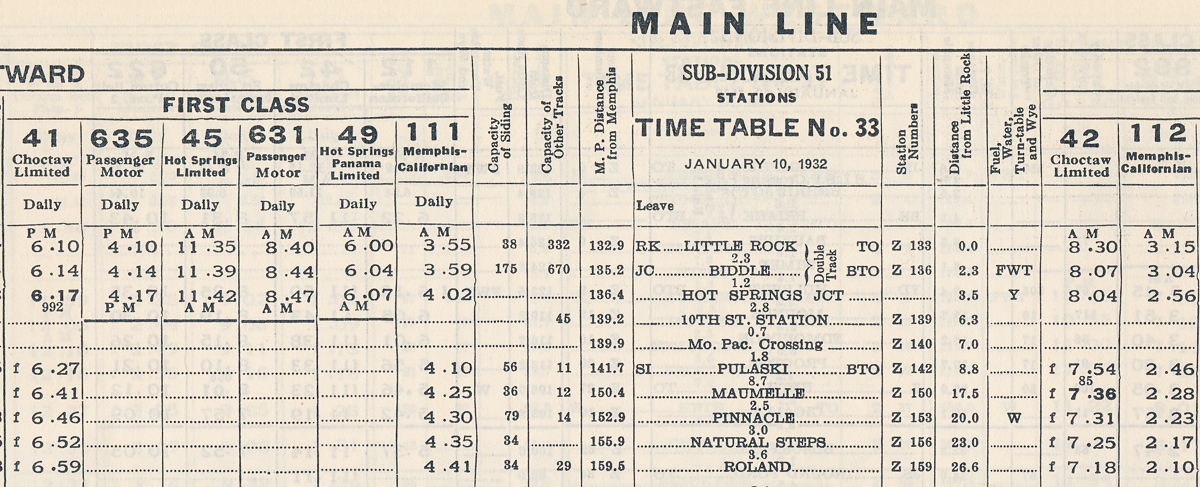
One of the more serious Rock Island passenger train accidents happened just beyond the west siding switch at Pulaski at 1:40am on January 15, 1948, when Rock Island train No. 111, the westbound Memphis-Californian, collided head-on with an eastbound local freight train, killing the engineer of No. 111 and one passenger. The accident occurred due to confusion over train orders changing the meeting point between the two trains to Pulaski rather than the usual meeting point of Pinnacle. The resulting Interstate Commerce Commission accident investigation (No. 3158) strongly encouraged the Rock Island to install automatic block signals along this segment of the railroad.
After the removal of the passenger station, only a few railroad structures remained at Pulaski. A section house and a bunk house for track crews were both located on the south side of the right of way near the east end of Pulaski siding. The bunk house was removed in October 1951 and the section house in July 1952. The last structure, a handcar shed located several hundred feet west of the station site, survived into the post-Rock Island era of the Little Rock & Western.
At some point in the 1950s or early 1960s, a buff brick building was erected on the old foundation of the Pulaski depot. Although some accounts identify this structure as the highly modified Rock Island station, that seems unlikely. As far as is known, this structure is unrelated to the original depot other than sitting in the same general location. This much newer building still survives in 2020.
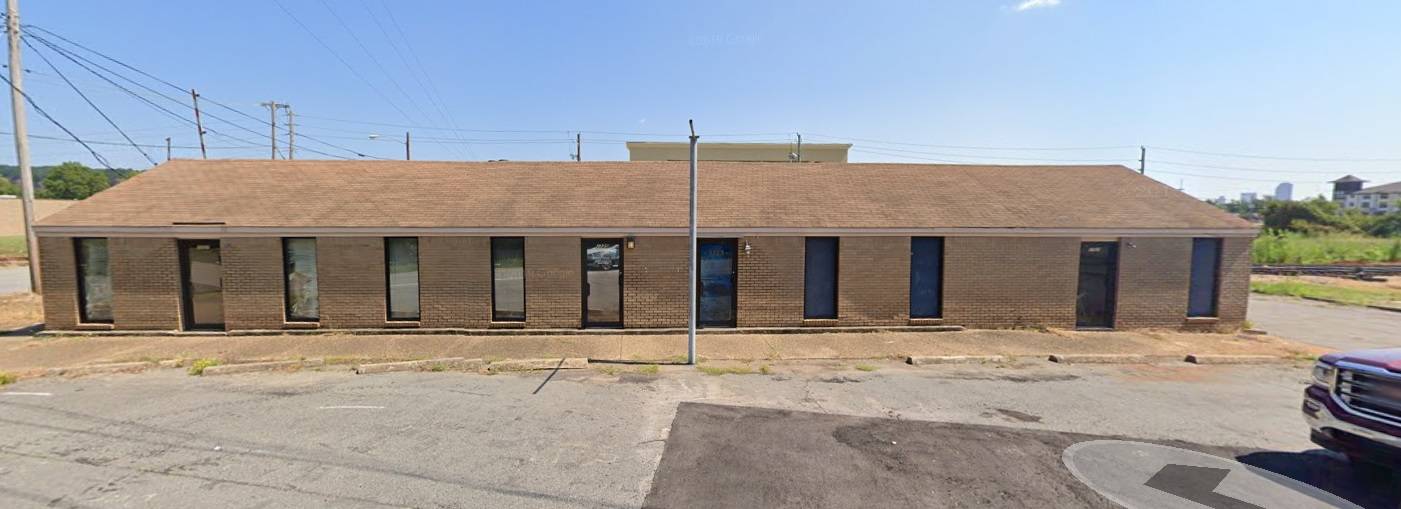
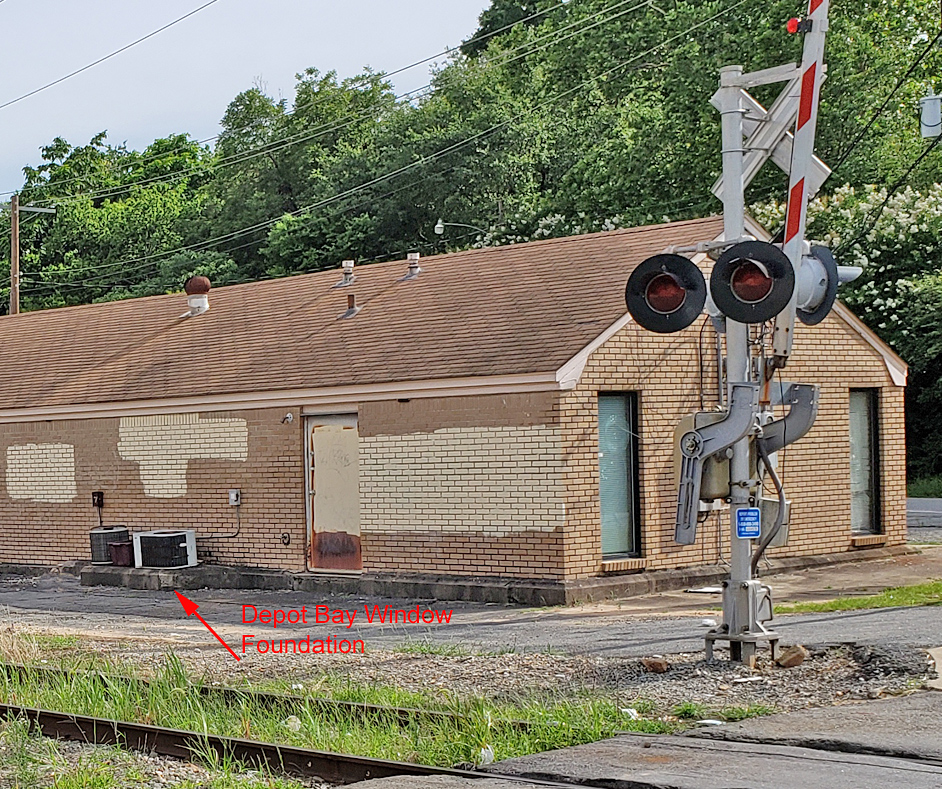

Photographs of Rock Island's classic Pulaski depot are yet to be discovered. Do you have an old photo or real photo postcard in your collection which might be this station? We would like to add photo coverage of this station if photographs can be found.